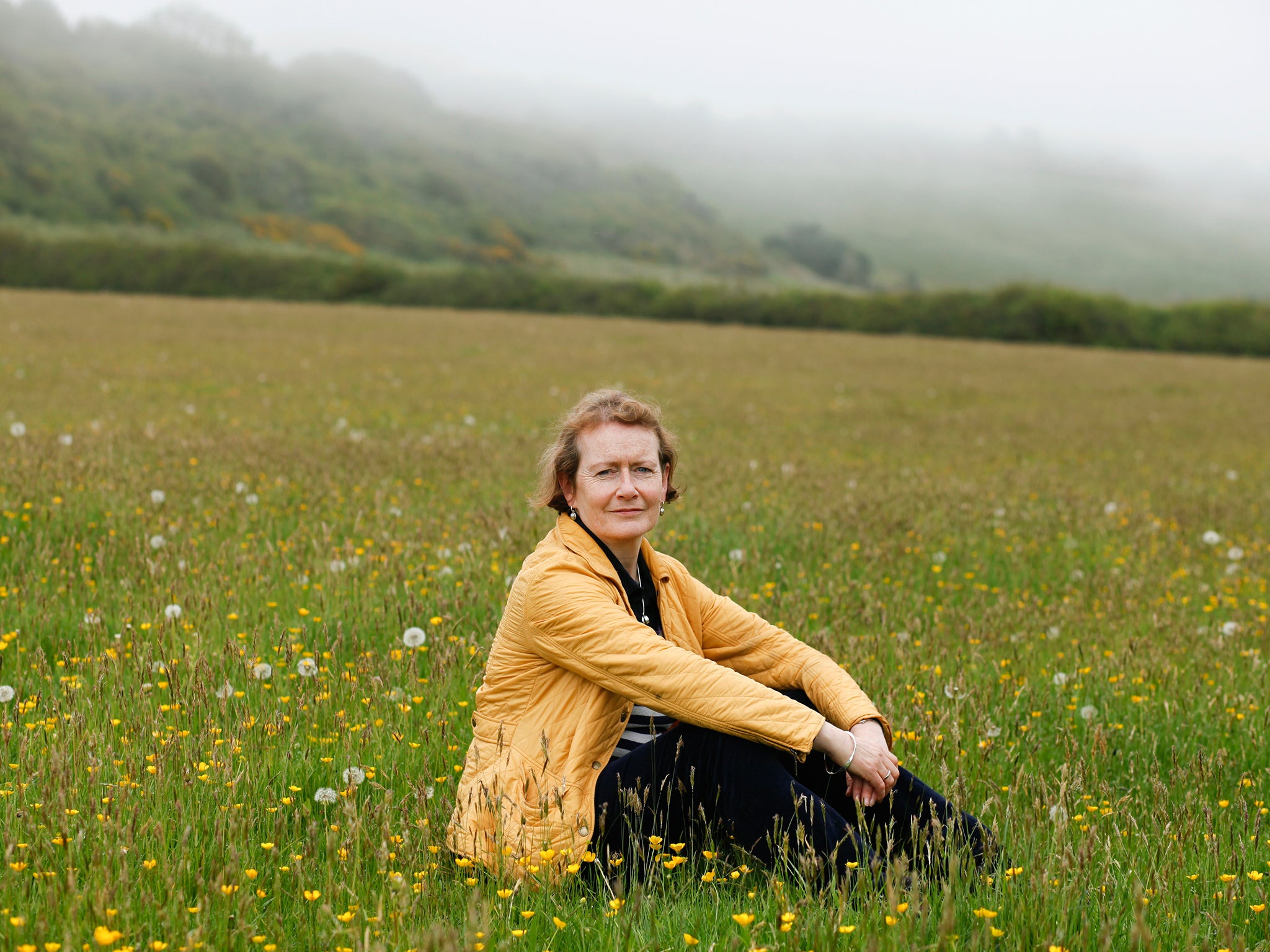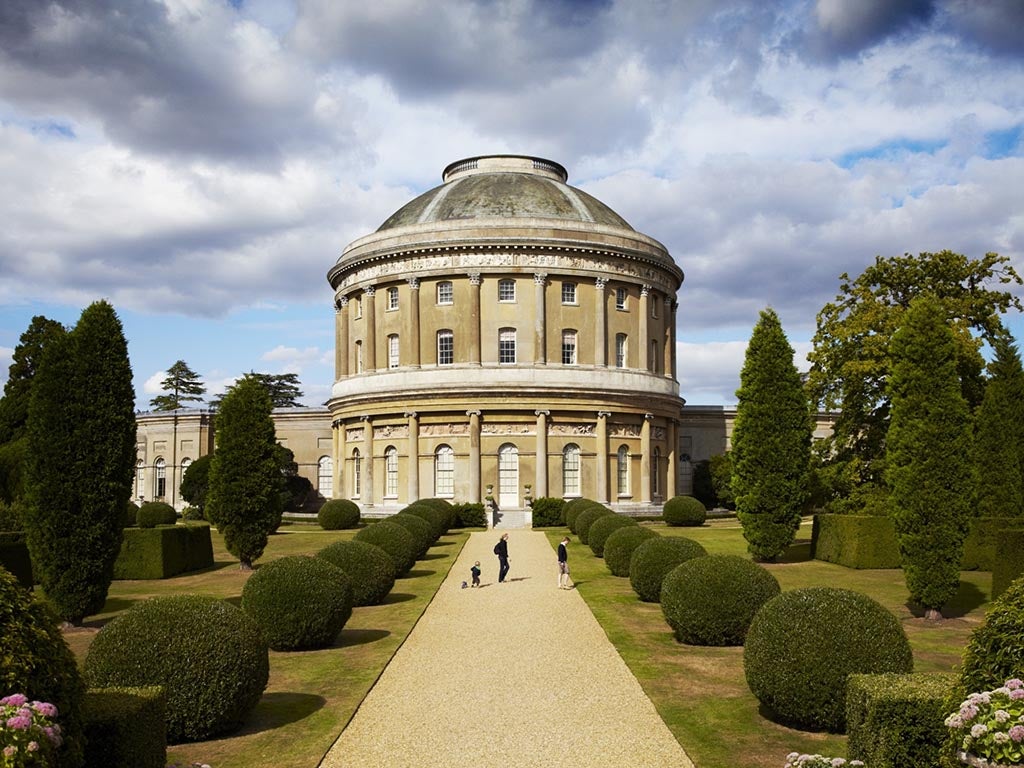Dame Helen Ghosh: Ex senior Home Office figure on using her skills to help the National Trust deal with climate change
As historic brickwork crumbles and coastal erosion bites, Ghosh is rolling up her sleeves

Your support helps us to tell the story
From reproductive rights to climate change to Big Tech, The Independent is on the ground when the story is developing. Whether it's investigating the financials of Elon Musk's pro-Trump PAC or producing our latest documentary, 'The A Word', which shines a light on the American women fighting for reproductive rights, we know how important it is to parse out the facts from the messaging.
At such a critical moment in US history, we need reporters on the ground. Your donation allows us to keep sending journalists to speak to both sides of the story.
The Independent is trusted by Americans across the entire political spectrum. And unlike many other quality news outlets, we choose not to lock Americans out of our reporting and analysis with paywalls. We believe quality journalism should be available to everyone, paid for by those who can afford it.
Your support makes all the difference.It took the National Trust, keeper of stately homes, windswept coastline and tea and scones, 85 years to sign up one million members. Its fifth million, forecast by 2020, will have joined in six years flat.
The impact of climate change might mean there is crumbling brickwork and coastal erosion to contend with but the institution’s supporters are anything but endangered species.
But in looking after the nation’s treasures, nothing can be taken for granted, according to director-general Dame Helen Ghosh. Citing a colleague’s wise words, she says: “Conservation is about managing the process of change, not keeping things exactly as they are.”
It might be why from a position of obvious strength there is a cheerful paranoia about the trust, which has just unveiled a new 10-year vision. Central to the plan is spending an extra £30m a year on conservation projects, on top of its existing £70m annual budget. Underlying the vision is a drive to broaden its appeal, including catering for visitors with shortening attention spans, in the hope of bringing in the extra money.
“We have to keep reminding people that we are a charity,” says Ghosh, 59, preserver-in-chief of jewels such as Giant’s Causeway in Northern Ireland, Fountains Abbey in North Yorkshire and Morden Hall Park, a former deer park in south London where we meet in the revamped stable yard a stone’s throw from an old snuff mill and a rose garden in full bloom.
“Because we are very successful in a lot of commercial ways people think we have got enough money to cover our costs,” the former civil servant continues. “There are a lot of our places, particularly our countryside, which didn’t come with any money at all so there we have to live on our wits.”
It means that members, who already pay an annual subscription, will be subtly tapped for extra money as they walk around the trust’s 300 houses, 775 miles of coastline and 600,000 acres of countryside.
The experience is already changing: people are as likely to visit trust properties to enjoy open-air jazz concerts and adventure playgrounds as wander around dusty houses. And when they do venture inside, Ghosh’s team has been trying hard to make the experience less challenging. Just don’t accuse her of dumbing down.
“When you take your children when they are small into a big art gallery or a house full of wonderful collections, what you do for them is select out some things,” she says. “When you are going in you say, I tell you what, we will just look at six wonderful pictures and then we will go and have an ice cream.”

To help visitors navigate, the trust is also shining lights on choice artefacts, as with its “gloom to glow” project at Nostell Priory in Wakefield. More controversial was its idea of tossing bean bags into the grand rooms in Ickworth House in Suffolk to encourage dwell time – an experiment too far for some regulars.
It seems only right at Ghosh should delve into the trust’s history to decide on its trajectory. Co-founded by social reformer Octavia Hill, who believed in preserving “open air sitting rooms” for city dwellers, the trust changed focus in the mid-20th century to take ownership of stately homes, accompanied by family endowments, that would otherwise have fallen into ruin.
“The trust has been very different things at different times and what you can see it doing is responding to the particular need of the time,” she says. Today, Ghosh thinks the challenge lies in the countryside, where plant species are dying out and climate change is scarring the landscape. Already there are 20 million visits a year to its houses but 200 million visits to its countryside, including the recently acquired Great Orme headland in north Wales.
Whenever the trust takes on another asset, it does the same calculation looking 50 years out at visitor income, rental fees and the cost of maintenance. A large country house in a poor state could make for a £40m commitment. For a stretch of coastline, at about £3,000 per mile per year, the bill is closer to £1m. Yet, however much coastline it buys, the trust cannot prevent miles of cliffs from collapse. A report by the trust later this year will recommend that the only option open for some sites is abandonment.
“In some places the only thing to do is to let nature take its course,” Ghosh admits. “There are other places where you will see us, at least for a time, actively managing the change.”
The trust makes £36m profit from its visitor business, including coffee shops, and £45m in investment income from legacies and grants. To expand the work it can do, it is partnering with Natural England and the RSPB to plot a future for larger swathes of land. Other partnerships are in the pipeline – such as working with councils in Sheffield and Manchester to help with the management of parks – but Ghosh insists it is not a land grab.

“One thing you can trace through all of my professional life is the phrase: it’s not a competition,” she says firmly. Instead the trust is offering its skills in fundraising and volunteering to organisations whose open spaces are becoming harder to pay for.
Ghosh’s father was also in the civil service as an aeronautical engineer based at Farnborough, while her mother became a librarian once she had raised five children. They imbued her with public service ideals so that after taking her civil service exams she was drawn to the Department of the Environment because it listed buildings – although she did not listed any when she got there.
Ghosh worked in Lord Heseltine’s office when he was rebuilding Liverpool after the Toxteth riots. Ever bigger tasks came her way – regenerating east London, managing Labour’s New Deal, implementing tax credits, the merger of the Inland Revenue and Customs & Excise – before her last role as Permanent Secretary at the Home Office, where she was known for bringing in homemade cakes.
“It was an exciting and interesting thing to do in the Home Office because it wasn’t really a cake environment. The National Trust has plenty of cake.”
She still rates a civil service career, but thinks the institution should look forward, not back to its Victorian roots. Its political impartiality is vital for calculating benefits or dealing with aspects of criminal justice but managing things like large IT projects are less of a must.
“There is an opportunity for the civil service to grab the reform agenda and say these are things that the public would want it to do and kind of relax a bit about some of other stuff,” she argues.
Before she left, Ghosh was talked of as the next Cabinet Secretary – the most senior civil servant in the land. Three years on, she is convincingly uninterested in the position.

“A bit of advice I give to my children is don’t apply for a job you don’t actually want to do because you might find you get it,” she says. The trust might be her last big job, but then again, nothing can be taken for granted.
CV: Helen Ghosh
Education
Studied at Farnborough Hill, an all-girls Catholic school. Graduated with a BA in modern history from St Hugh’s College, Oxford in 1976 and then and MLitt from Hertford College, Oxford, writing on 6th-century Italian history.
Career so far
Joined the civil service as a trainee in the Department of the Environment in 1979. Head of the housing policy team in 1992, moving to the Government Office for London in 1997 as director for London East and European Programmes. At the Department for Work and Pensions she was director of the children’s group, with responsibility for child benefit. Permanent Secretary at Defra from 2005, moving to same role at the Home Office in 2011. Director general of the National Trust since 2012.
Personal
Married to Peter Ghosh, a historian and fellow of St Anne’s College, Oxford. Their daughter, 26, is studying art history and their son, 24, a PhD on the writer VS Naipaul. Lives in Oxford and relaxes by working on her allotment, walking and watching ballet.
Join our commenting forum
Join thought-provoking conversations, follow other Independent readers and see their replies
Comments